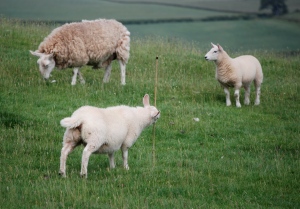I love all types of musics but I have a growing hatred for pop rap. By “pop rap” I mean over-played, gangster rap. I still appreciate the talent and time it takes to make a good beat but why are there so many weak lines out there that no one picks up on? Have we just stopped paying attention to lyrics?
Now back in his day I am sure Shakespeare was a thug (if he or she was real person). His lines were tight and given his rhymes about the ladies I am sure he was a pimp. I imagine him spitting some fresh lines to dimes all the while G-ed up from the feet up (rapping to hot girls and dressed nicely). Most of his lines are timeless and can be used by anyone regardless of race or class. Now lets see that scenario in the modern times. Just imagine an elderly and sophisticated British man saying the following.
Lil’ Wayne- Lollipop
Ow…
Uh Huh No Homo…
Young Mula Baby
I say he so sweet
Make her wanna lick the rapper
So I let her lick the wrapper
Okay, Jeves that is just Creepy! Please Ying Yang Twins, restore my faith in rap stars. Surely, you must be clever with your reference to the ancient Asian (oldest example actually found in Korea) symbol representing the duality, perhaps representing the duality of humanity a la Full Metal Jacket. I’ll let the reader decide, try to imagine a Korean child saying the following.
Ying Yang Twins- Wait (the whisper song)
Ay bitch! Wait til you see my dick
Wait you see my dick
Ay bitch! Wait til you see my dick
Imma beat dat pussy up
Like B-AM, B-AM, B-AM [… etc]
Beat da pussy up, Beat da pussy up
Holy break-dancing Christ, you kiss your mother with that mouth? Well, this could go on and on, my next targets would be Dizzee Rascal “Dance with Me” and Usher’s “Make love in this club”. Usher, seriously, “make loving” and “public areas” only mixes for exhibitionists, for the rest of us a hook up in the club is followed by regret, a trip to the VD clinic and children, or so I hear *tugs at collar*.
I think you get the point, most pop rap sucks. OK, technically “Wait” wasn’t a single by the Ying Yang twins but their single “Salt shaker” was and it also deserved to be flushed like the turd it was. Any song that has the word “skeet” in it is referring to ejaculating and is therefore not contemplating the inner workings of the human soul. I enjoy talking about the funny things about being human, as I have a very dirty sense of humor, but is “coming” on someone or something really what you need the world when the spotlight is briefly on you? I don’t hate rap, but I hate that I have to search harder and harder to find good rappers. Here are a few I can think of.
Shad- he’s Canadian and up for a Canadian music award (a Juno if I remember correctly). His intelligent mind and playful sense of humor comes together beautifully in his album “The Old Prince” which I bought over the Itunes store awhile back. Deep songs such as “Brother (watching)”, which tackle race related stereotypes are intermingled with humorous songs like “The Old Prince Still Lives at Home”, which is practically a theme song for cheap student living. The mix is perfect as it is thought provoking with out overwhelming or depressing the listener. I really hope he gets the Juno, talent like his should be brought to the forefront. Link to CBC Radio3 website which hosts many of his songs here.
Talib Kweli- proof that you don’t have to be underground to be deep. I first found Talib Kweli through his songs like “Get by” and “Listen”. “Listen” (music video here) expresses my anger over a lack of “real rap”. I need to invest more in his albums as the more I hear the more I like. I hear he’s doing well for himself, oh and hes also in some Kanye West songs.
Brother Ali- proof that you can be white and rap. Apart from Eminem and the Beastie Boys we white people got nothing (main stream that is). Brother Ali is a great freestyle rapper whose duels can be found on youtube, and he has a great anti-war rap called Uncle Sam Goddamn (video here). Abdominal is another good white (and Canadian) rapper. Check out “Fast Food (Fry Antics)” its another funny song, you can find many of his songs here.
Now a fantastic parody of gangster rap is Jon Lajoie’s “Everday Normal Guy” (video here). He’s Canadian and has a lot of other funny stuff, I like the cut of his jib and I hope he goes far.
*In the voice of a sterotypical burly Turkish man* I’s out y’all

